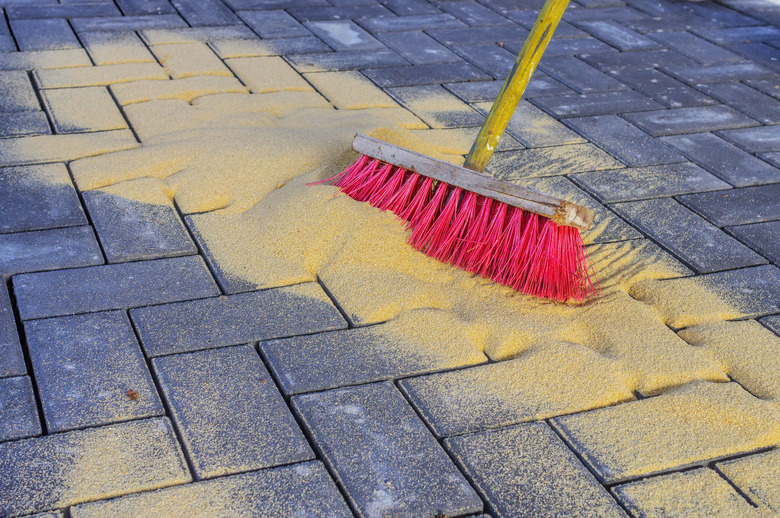How To Remove Polymeric Sand From Pavers
We may receive a commission on purchases made from links.
It's so easy to install pavers yourself; in fact, it's one of the easiest DIY projects that can result in a beautiful patio, with just a little elbow grease and research. But ... one of the most useful items at your disposal when installing your own patio is polymeric sand.
This wonderful invention — a sand that pours oh-so-nicely into the cracks between your pavers and then hardens to a cementlike yet porous finish — can also harden like cement on top of the pavers if it has half a chance. Removing polymeric sand from the top of pavers is possible, but it's not easy.
What Is Polymeric Sand?
What Is Polymeric Sand?
Polymeric sand is not the cheapest option out there when filling the gaps between pavers, but wow is it a great invention. It looks like sand, pours like sand, and feels like sand, but once it's exposed to moisture, it hardens into a cementlike substance — and here's the most impressive part — it's soluble and flexible. When it rains or the area gets wet, the water passes down through it rather than pooling the way it would with cement. It is simply a great product for filling joints between pavers.
The magic is the formula: Polymeric sand consists of very fine, graded sand. Then it has additives, including silica and a range of polymers. It acts like sand when dry and bonds like cement when it gets wet. The formula usually breaks down to 85 to 90 percent quartz and crystalline silica.
Preventing Polymeric Sand From Hardening on Top of Pavers
Preventing Polymeric Sand From Hardening on Top of Pavers
You've laid your foundation of gravel and sand and placed your pavers. Everything is level and looks good, and now you're ready to add the polymeric sand between the pavers. You pour it between the joints and sweep it in. But be careful: Any polymeric sand left on top of the pavers will harden when wet, leaving a milky film and sometimes even rough clumps.
So before you wet the sand between the joints, be sure to remove all sand on top of the pavers. One of the best ways to do this is to use a leaf blower. Level the blower to avoid blowing sand out from between the pavers. In addition, sweep the pavers with a shop broom to remove any sand hidden in crevices.
Removing Hardened Polymeric Sand
Removing Hardened Polymeric Sand
But sometimes, things can go awry. Maybe it rains that night or the sprinkler system kicks on and washes out some of the sand on top of the pavers. Polymeric sand that has hardened on top of your pavers will create a visible haze that is hard to remove. If you end up with polymeric sand hardened like cement on top of your pavers, you do have options.
Depending on how thick the sand is, first start with a simple hose. If the sand is sufficiently hardened in the cracks, regular hose pressure might be enough to wash away the film. Next, try a pressure washer. Be careful and use a low pressure setting of 1,600 to 2,000 psi. This avoids removing the sand from between the joints. In addition, try using hot water at about 180 degrees Fahrenheit. For small areas, try boiling water without the pressure washer.
If you still can't remove the polymeric sand haze, consider calling a professional to clean your pavers. These experts will likely use chemical products designed to remove polymeric haze, such as Artisan Poly Haze Remover. If you want to try this process yourself, be sure to read the product's instructions carefully and take all recommended safety precautions.
Tip
Avoid walking or driving on pavers for 24 hours after wetting the polymeric sand in the paver joints.
